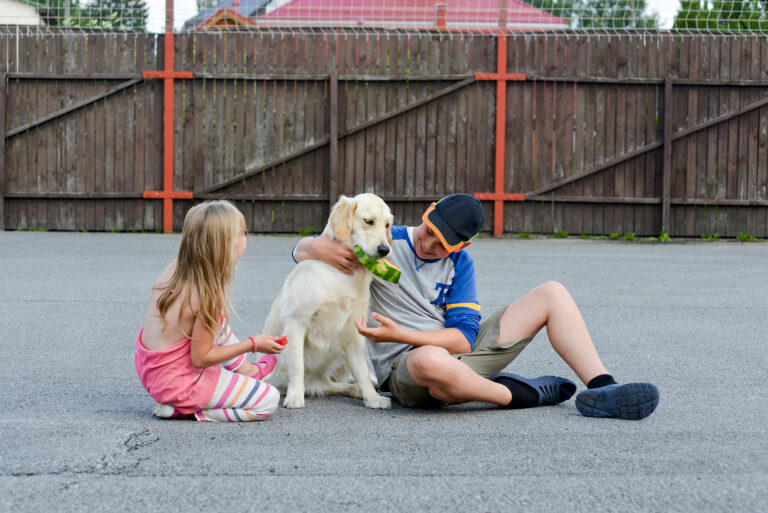As the weather warms up and spring approaches, so does tick and flea season—a time when these pesky parasites become more active and pose a threat to your dog’s health. Ticks and fleas are not only irritating but can also transmit serious diseases, including Lyme disease, ehrlichiosis, and tapeworms.
For dog owners, preparing early is key to keeping your canine companion protected. Taking preventative steps before the season is in full swing can minimize the risk of infestation and ensure a happy, healthy spring and summer for your pet.
Table of Contents
Why Early Prevention is Important
Once fleas or ticks establish themselves on your dog or in your home, getting rid of them can be a time-consuming and expensive process. Fleas reproduce rapidly—one female flea can lay up to 50 eggs per day—while ticks latch onto your dog and can transmit harmful bacteria within 24-48 hours of attachment.
Starting prevention before the peak season ensures:
- Reduced risk of infestation
- Lower chance of disease transmission
- Less discomfort and irritation for your dog
- Easier control of your home environment
Key Early Prevention Tips for Tick and Flea Season
1. Start Preventive Medications Early
One of the most effective ways to keep fleas and ticks at bay is to administer a vet-approved preventive treatment. There are several options:
- Topical treatments (spot-ons): Applied to the skin, these treatments kill and repel ticks and fleas.
- Oral medications: Chewable tablets that kill parasites systemically.
- Collars: Infused with chemicals that repel or kill ticks and fleas over several months.
Speak to your veterinarian to determine which option is best based on your dog’s age, size, health condition, and lifestyle. Starting treatment early—before fleas and ticks become active—provides consistent protection throughout the season.
2. Regularly Inspect Your Dog for Ticks and Fleas
Early detection is crucial. During daily grooming or after outdoor activities, check your dog for signs of parasites:
- Ticks: Feel for small bumps, especially around ears, neck, between toes, and under legs. Ticks can be as small as a sesame seed when unengorged.
- Fleas: Look for flea dirt (tiny black specks) or excessive scratching, biting, and licking. Fleas may also be visible around the base of the tail or belly.
If you find a tick, remove it promptly using fine-tipped tweezers. Grasp it close to the skin and pull straight out. Clean the area afterward with antiseptic.
3. Keep Your Yard Well-Maintained
Ticks and fleas thrive in tall grass, leaf litter, and shaded areas. Keeping your yard tidy helps reduce their habitat:
- Mow the lawn regularly and trim bushes.
- Remove leaf piles and debris where ticks may hide.
- Keep outdoor play areas clear of long grass and clutter.
- Consider using pet-safe outdoor treatments or natural repellents to deter fleas and ticks in your yard.
Creating an environment that’s less appealing to parasites lowers the chances of them latching onto your dog.
4. Bathe and Groom Regularly
Routine bathing helps remove dirt, flea eggs, and any potential ticks hiding in your dog’s coat. Use a gentle flea-repellent shampoo recommended by your vet, especially if you’ve spotted signs of fleas or ticks.
Regular grooming also allows you to check for:
- Flea dirt or live fleas
- Ticks embedded in the skin
- Skin irritation or scabs from bites
For long-haired breeds, keeping the coat trimmed short can make it easier to spot pests early.
5. Wash Bedding and Clean Indoor Spaces
Your dog’s bedding, blankets, and favorite lounging spots can harbor flea eggs and larvae. To prevent indoor infestations:
- Wash bedding weekly in hot water.
- Vacuum carpets, furniture, and corners frequently to remove flea eggs and ticks.
- Dispose of vacuum bags or empty canisters outside immediately.
Keeping indoor spaces clean minimizes the risk of fleas hatching and multiplying in your home.
6. Limit Exposure in High-Risk Areas
While outdoor adventures are fun, areas with dense woods, tall grass, and wildlife are breeding grounds for ticks and fleas. When hiking or walking your dog:
- Stick to designated trails and avoid overgrown areas.
- Keep your dog on a leash to minimize contact with wildlife or infested zones.
- After outings, do a thorough tick and flea check before coming indoors.
7. Consider Natural Preventatives
In addition to traditional medications, some owners use natural deterrents to complement their prevention plan:
- Apple cider vinegar sprays (diluted with water) applied lightly to the coat
- Essential oil blends (pet-safe options like cedarwood or lavender)
- Diatomaceous earth sprinkled in outdoor areas to control flea populations (ensure it’s food-grade and used safely)
Always consult your vet before using natural products, as some ingredients may be harmful to dogs.
In Conclusion

Tick and flea season is inevitable, but with early preparation and consistent preventative care, you can keep your dog safe, healthy, and comfortable. Starting treatments early, maintaining a clean environment, checking your dog regularly, and working closely with your vet creates a strong defense against parasites.
By being proactive, you’ll ensure your dog can enjoy the spring and summer months free from the discomfort and dangers of ticks and fleas.







